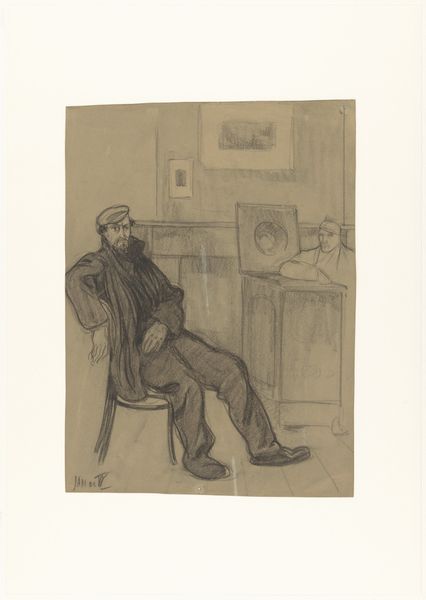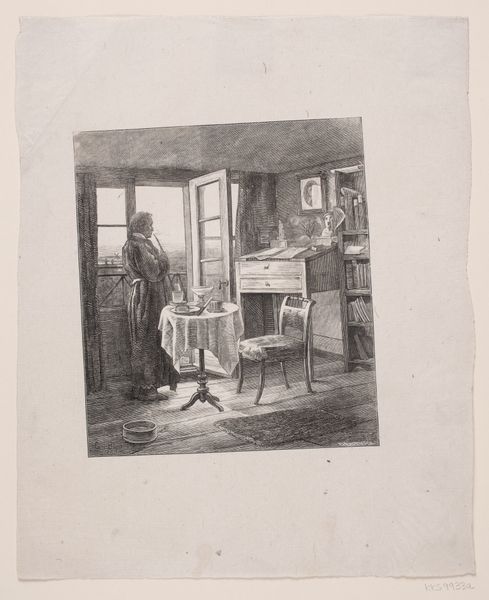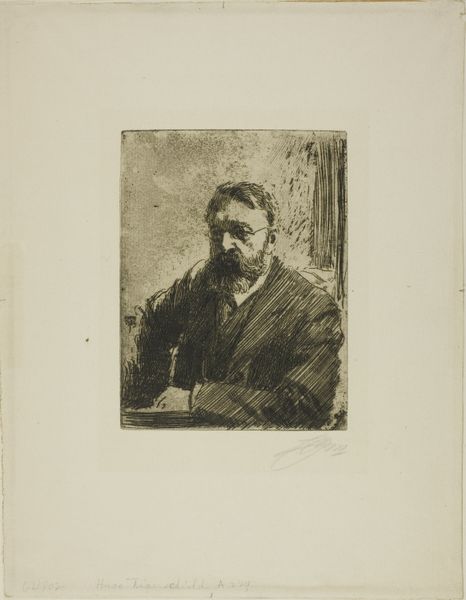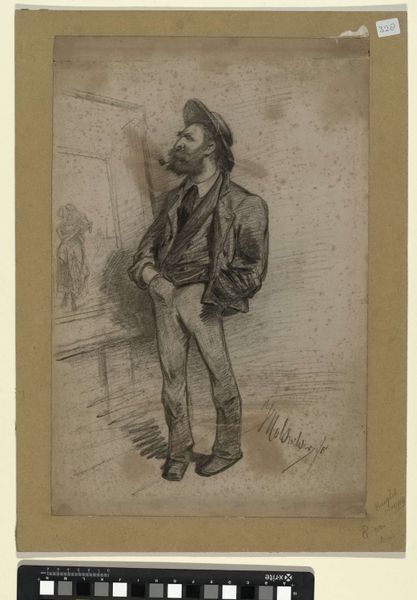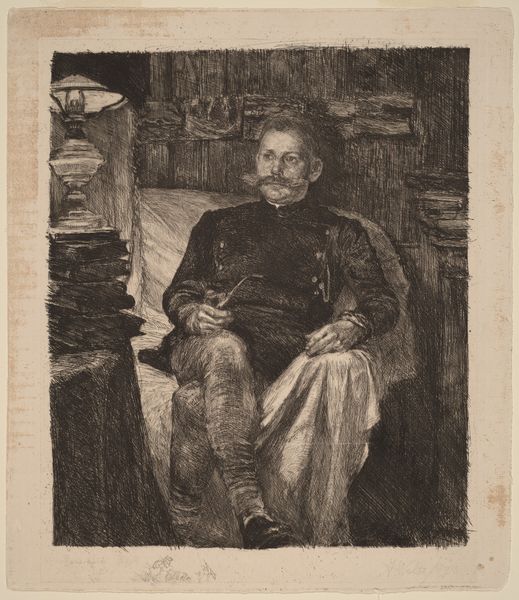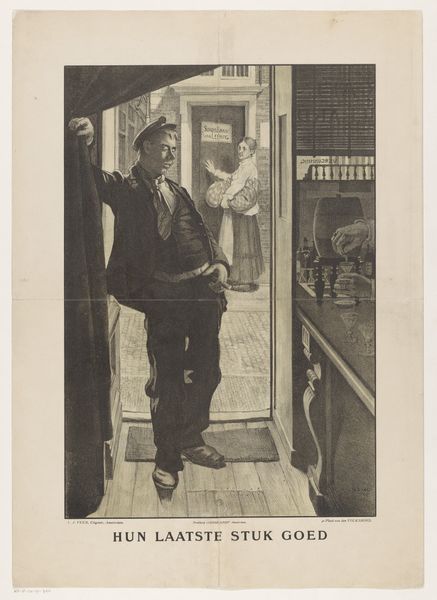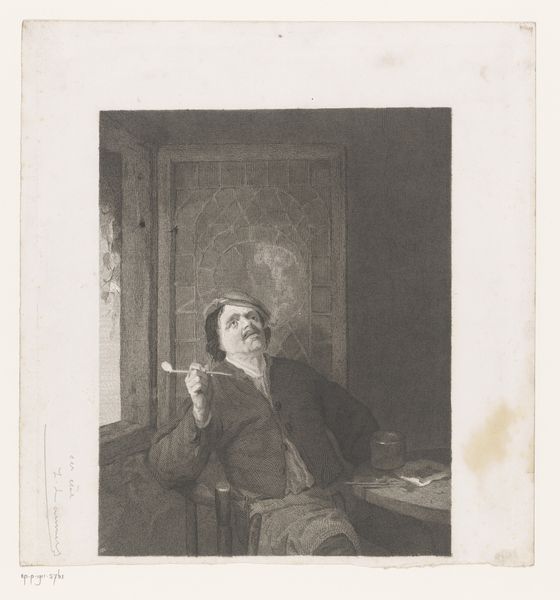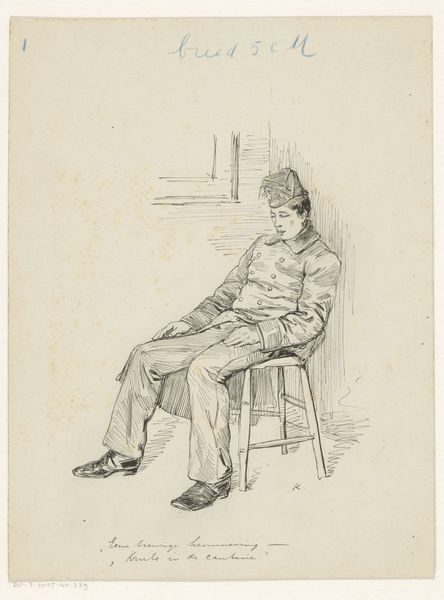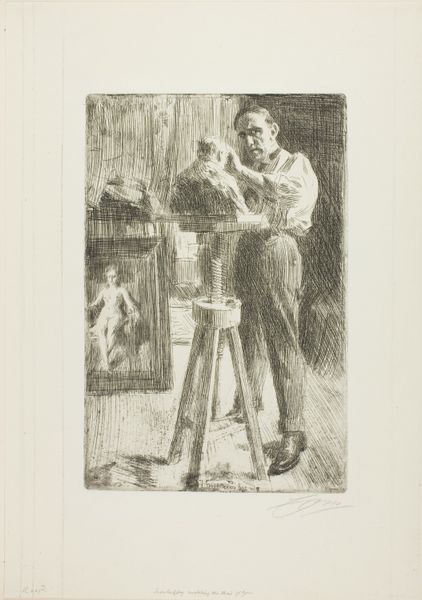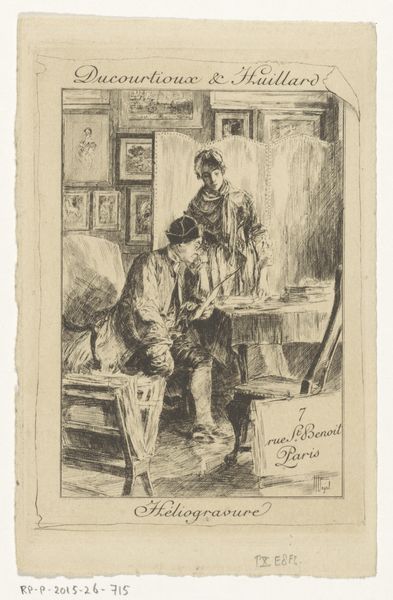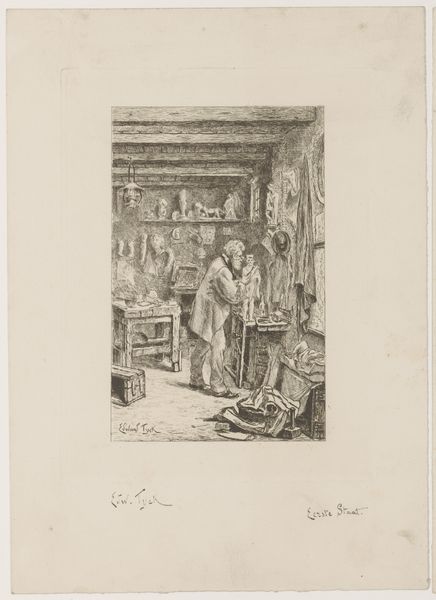
drawing, ink, pen
#
portrait
#
drawing
#
ink
#
pen-ink sketch
#
pen
#
genre-painting
#
realism
Dimensions: image: 32.39 × 17.78 cm (12 3/4 × 7 in.) sheet: 42.8 × 25.1 cm (16 7/8 × 9 7/8 in.)
Copyright: National Gallery of Art: CC0 1.0
Curator: Kenyon Cox created this pen-and-ink drawing, titled "A Corner Window, Will Low," in 1884. It’s a fascinating portrait rendered with incredible detail. Editor: Wow, talk about a mood. It’s contemplative, almost melancholy, like peeking in on a quiet moment of someone else's life. The lines feel both precise and scratchy, like a memory struggling to be clear. Curator: The realism is definitely striking, but it's the intersection of domestic space and artistic identity that really grabs me. This intimate scene could speak volumes about artistic life during that era. Note the detailed rendering of the books, pottery, busts… what does that curation of objects express? Editor: Yeah, the still life behind him—it feels deliberately constructed, right? Is he showcasing his world, creating a character? Maybe he's saying, "Hey, look at me, I'm a serious artist, with serious influences!" And those sketches and portraits of what look to be stern, serious figures gazing over his shoulder definitely emphasize that effect. Curator: Exactly! Cox, though largely forgotten now, was a key figure in the American Renaissance. It’s not merely a portrait; it speaks to cultural aspirations of the time. It is rendered as a very controlled portrait; the casual pose of Low contrasts rather sharply with his meticulous detailing. Editor: I am also taken with the presence of smoke; in a weird way the haziness lends a degree of dynamism, offsetting that stolid gaze. He feels incredibly self-aware, almost daring you to find fault with him. And I do love the slightly disheveled ambiance, even if it does betray that sense of forced display. Curator: It's a portrait, a genre painting, and a snapshot of intellectual life—a complex representation far beyond its surface. We gain some perspective on Cox through Will Low’s portrayal and even Low can become the means for viewing American expatriate artistic identity in the late nineteenth century. Editor: Looking at this again, I keep circling back to that title: A Corner Window. It's not just a physical location but a portal—allowing both literal light and metaphorical perspective into this artist's world. And, maybe, out of it. Curator: I agree. It is one of the accomplishments of the art here to give the impression that Will Low inhabits a mental state we are invited to share through aesthetic clues. Editor: In sum, both intimate and meticulously studied; what seems a simple snapshot ultimately reveals a rich and complex story.
Comments
No comments
Be the first to comment and join the conversation on the ultimate creative platform.

